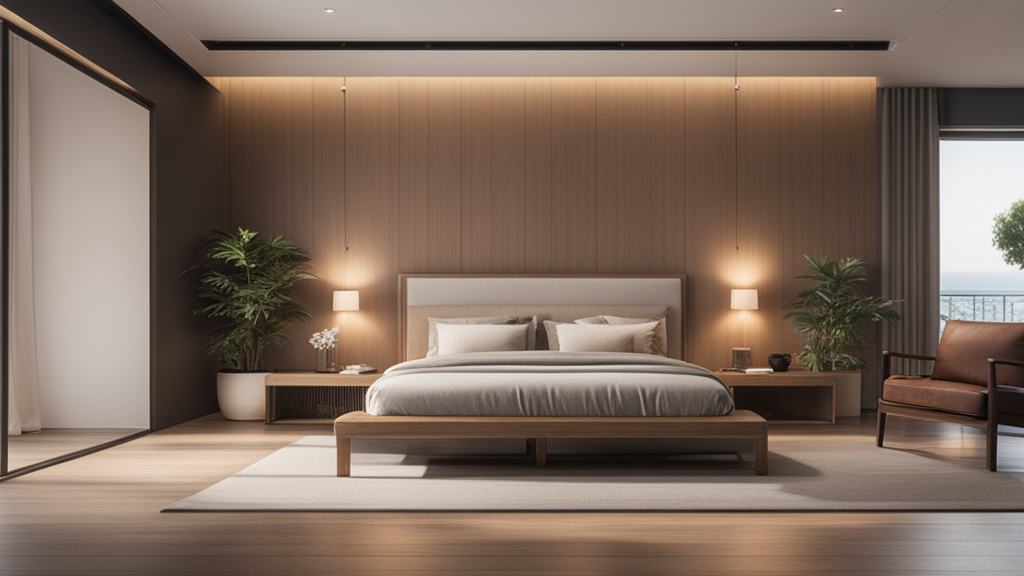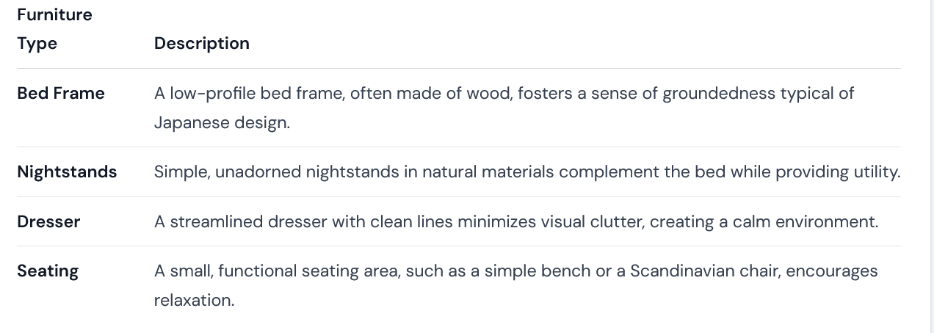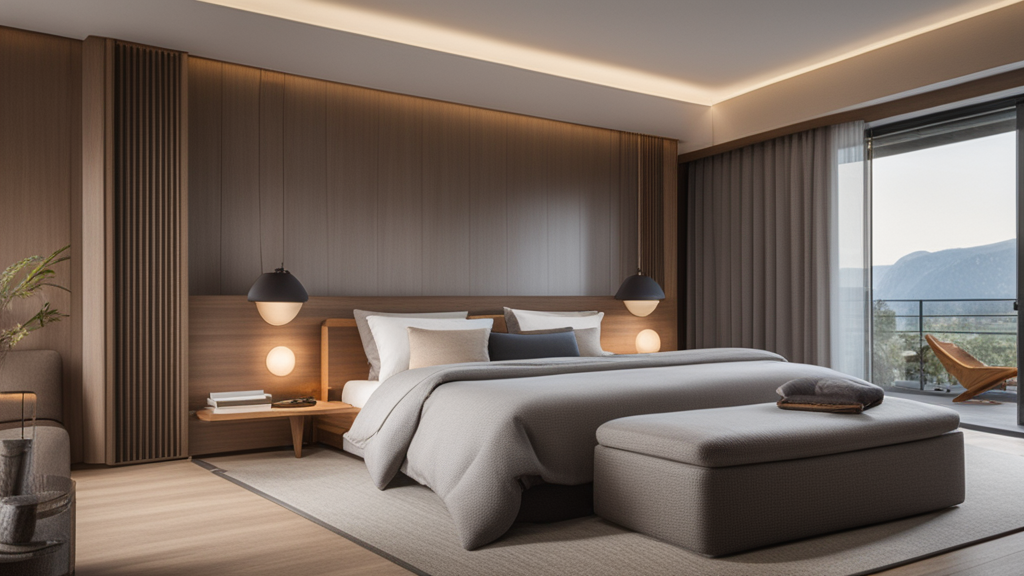Exploring What is a Japandi Bedroom?
What constitutes a Japandi bedroom, and how does it blend various aesthetic principles to create a harmoniously designed space?

Understanding Japandi Design
Japandi design is a remarkable fusion that marries the elegance of Japanese minimalism with the warmth of Scandinavian functionality.
This design ethos emphasizes simplicity, natural materials, and the appreciation of beauty inherent in craftsmanship. It encourages mindful living, where each carefully selected element contributes to a peaceful environment.
Historical Context
The roots of Japandi design can be traced back to the cultural movements of Japan and Scandinavia. Japanese aesthetics are characterized by Zen principles, focusing on minimalism and a connection with nature.
In contrast, Scandinavian design champions functionality and a cozy atmosphere, often referred to as "hygge." The intersection of these two philosophies results in a unique space that embodies both tranquility and practicality.
Key Characteristics of Japandi Design
Japandi design is marked by several essential characteristics that make it stand out.
Understanding these attributes aids in crafting an authentic Japandi bedroom.
- Simplicity: Minimalist principles guide the creation of spaces that are free from clutter and distractions. This focus on simplicity fosters a serene atmosphere, conducive to relaxation.
- Natural Elements: Incorporating materials such as wood, bamboo, and linen helps to establish a connection with nature. These materials are not only sustainable but also add warmth to the space.
- Neutral Color Palette: Japandi bedrooms usually feature a neutral color scheme. Shades like beige, gray, and soft whites create a calming atmosphere while allowing select pops of color through decor.
- Functionality: Every element in a Japandi space serves a purpose. Furniture pieces should be both aesthetically pleasing and functional, providing comfort without being overly ornate.
- Craftsmanship: Quality craftsmanship is held in high regard in Japandi design. Each piece of furniture or decor should reflect artisanship, enhancing the overall appeal of the bedroom.
Elements of a Japandi Bedroom
Constructing a Japandi bedroom involves incorporating specific elements that embody the design philosophy. These components work together to create a tranquil and inviting ambiance.
Furniture Selection
When curating furniture for a Japandi bedroom, one must prioritize functionality and simplicity. Several key pieces contribute to the overall aesthetic:

The color palette in a Japandi bedroom plays a crucial role in achieving a cohesive look. Neutral and earthy tones are universal in this design style.
Suggested Color Combinations

Textiles and Materials
Textiles and materials are essential in creating the intended comfort of a Japandi bedroom. The use of natural fabrics is paramount to evoke softness and serenity.
- Bed Linens: Opt for organic cotton or linen bedding that contributes to a comfortable sleeping environment.
- Curtains: Choose light and airy window treatments that allow natural light to filter through while maintaining privacy.
- Rugs: Natural fiber rugs such as jute or wool can enhance the warmth of the bedroom while adding texture to the design.
Lighting
Lighting in a Japandi bedroom should complement the serene atmosphere while providing functionality. Consideration of both natural and artificial lighting is necessary.
- Natural Light: Large windows should be prioritized to maximize daylight. Utilizing sheer curtains can help diffuse harsh sunlight.
- Artificial Lighting: Soft, warm light sources are ideal. Incorporating pendant lamps or minimalist bedside sconces can offer functional lighting without overwhelming the aesthetic.
Décor and Accessories
While Japandi design emphasizes minimalism, it does not entirely eliminate decor and accessories. The focus should remain on thoughtful selection and placement.


Creating a Japandi Bedroom: Step-by-Step Guide
Designing a Japandi bedroom requires careful thought and planning. The following steps can guide individuals through the process.
Step 1: Declutter
Begin by clearing the space of unnecessary items. This process not only involves removing physical clutter but also re-evaluating what items truly bring joy or utility.
Step 2: Choose a Color Palette
Select a neutral color palette that resonates with personal preferences. It is advisable to test paint samples to visualize how they interact with natural light.
Step 3: Invest in Quality Furniture
Opt for furniture that combines aesthetics and functionality. Prioritize pieces that utilize natural materials and embody clean lines.
Step 4: Incorporate Textiles
Carefully select textiles that enhance comfort. Consider layering textures to create a cozy and inviting atmosphere.
Step 5: Plan Lighting
Evaluate the available natural light and determine the best placement for artificial lighting sources. Ensure that lighting fixtures align with the overall aesthetic.
Step 6: Curate Decor Thoughtfully
Select decor items that speak to personal style while maintaining a sense of harmony within the space. Limit accessories to avoid visual overstimulation.
The Psychological Impact of a Japandi Bedroom
The design of a bedroom can significantly influence one’s mental well-being. A Japandi bedroom, with its emphasis on minimalism and natural elements, serves as a sanctuary for relaxation and rejuvenation.
Promoting Relaxation
The simplicity and order prevalent in a Japandi bedroom create an environment conducive to relaxation. Reducing visual distractions allows individuals to focus on self-care and mindfulness activities, such as reading or meditating.
Enhancing Sleep Quality
A thoughtfully designed bedroom can play a crucial role in promoting quality sleep. The use of calming colors, natural materials, and effective lighting strategies can create an environment that supports a restful night’s sleep.
Fostering a Connection with Nature
Integrating natural elements through materials and plants helps to reinforce a connection with the outdoors. This connection can induce feelings of tranquility and enhance overall well-being.

Sustainability in Japandi Design
Sustainability is a core principle in both Japanese and Scandinavian design philosophies. Implementing sustainable practices within a Japandi bedroom can contribute to a more environmentally friendly lifestyle.
Choosing Eco-Friendly Materials
When selecting furniture and textiles, prioritize sustainable materials. Reclaimed wood, organic cotton, and bamboo are excellent choices that align with Japandi aesthetics while minimizing environmental impact.
Supporting Local Artisans
Purchasing handmade items from local artisans not only supports the local economy but also reduces the carbon footprint associated with mass production and shipping.
Incorporating Plants
Indoor plants not only enhance aesthetic beauty but also improve air quality. Selecting low-maintenance plants can contribute to a vibrant living environment without requiring extensive care.
Common Mistakes to Avoid in Japandi Bedrooms
While aiming for a Japandi design, certain pitfalls may hinder the successful implementation of this aesthetic. Recognizing these mistakes can lead to a more effective and harmonious design process.
Over-Crowding the Space
A common error is the tendency to add too many decorative elements or furniture pieces. Stick to the principle of "less is more" by selecting only those items that truly resonate with the design ethos.
Ignoring Functionality
While aesthetics are important, compromising functionality can detract from the overall experience of the space. Ensure that each furniture piece serves a significant purpose while aligning with the design.
Failing to Personalize
Although Japandi design emphasizes minimalism, this does not mean personal expression should be neglected. Incorporate personal touches through curated decor that reflects individual preferences.

The Future of Japandi Design
As the interest in Japandi design continues to gain momentum, one must consider its potential evolution.
Global Influence
The blend of Japanese and Scandinavian influences captures the attention of design enthusiasts worldwide. As individuals seek accessible methods to create serene living environments, the dynamics of Japandi design may evolve further.
Adaptation and Integration
Future iterations of Japandi may see the integration of other cultural design principles, leading to hybrid styles. The focus on sustainability and well-being will likely remain central to these adaptations.
Continual Innovation
As lifestyles and living circumstances change, Japandi design will continue to adapt to these shifts. Innovations in materials and technology will facilitate the creation of harmonious spaces that resonate with the principles of Japandi.
In conclusion, constructing a Japandi bedroom is more than merely arranging furniture and decor. It involves a deep understanding of the principles of design, an appreciation for craftsmanship, and awareness of personal and environmental well-being.
Through intentionality and thoughtfulness, individuals can create a serene retreat that embodies the essence of Japandi style, promoting a sense of peace, comfort, and functionality.
